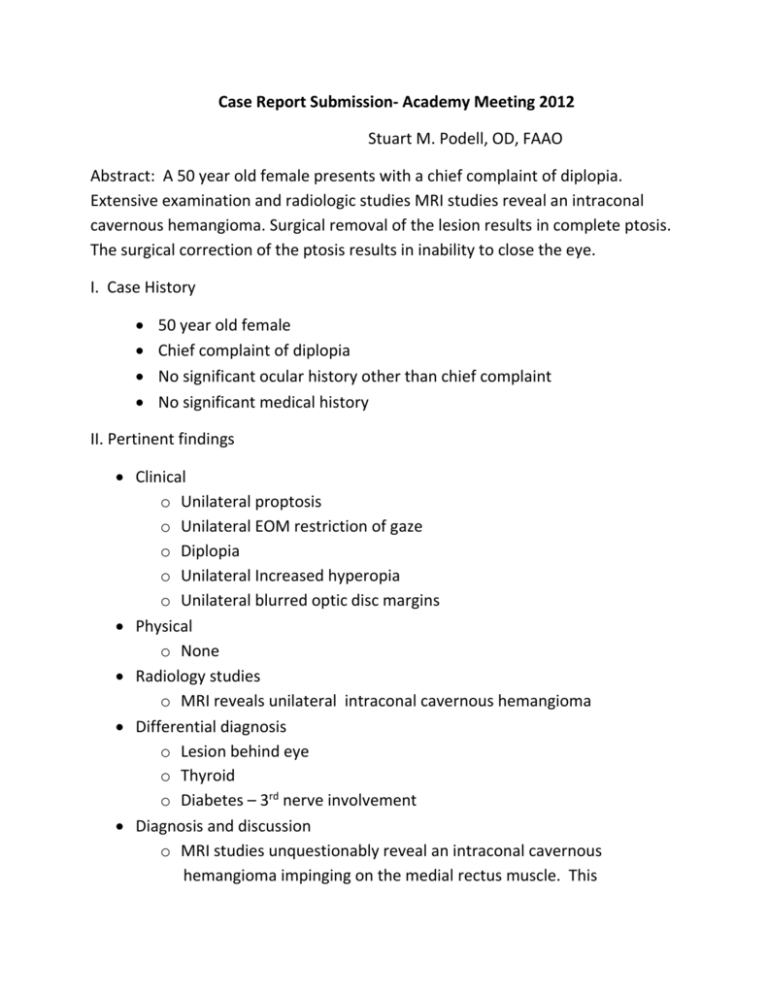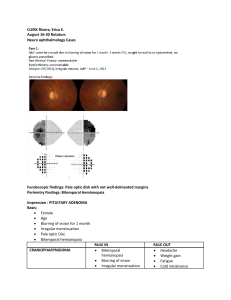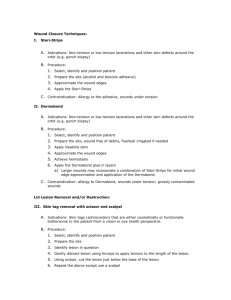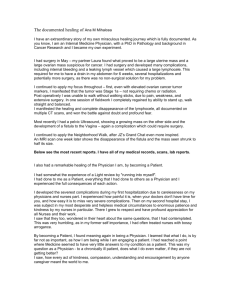outline29426
advertisement

Case Report Submission- Academy Meeting 2012 Stuart M. Podell, OD, FAAO Abstract: A 50 year old female presents with a chief complaint of diplopia. Extensive examination and radiologic studies MRI studies reveal an intraconal cavernous hemangioma. Surgical removal of the lesion results in complete ptosis. The surgical correction of the ptosis results in inability to close the eye. I. Case History 50 year old female Chief complaint of diplopia No significant ocular history other than chief complaint No significant medical history II. Pertinent findings Clinical o Unilateral proptosis o Unilateral EOM restriction of gaze o Diplopia o Unilateral Increased hyperopia o Unilateral blurred optic disc margins Physical o None Radiology studies o MRI reveals unilateral intraconal cavernous hemangioma Differential diagnosis o Lesion behind eye o Thyroid o Diabetes – 3rd nerve involvement Diagnosis and discussion o MRI studies unquestionably reveal an intraconal cavernous hemangioma impinging on the medial rectus muscle. This impingement is the cause of the restriction of gaze. The lesion is also pressing on the posterior of the globe causing reduced hyperopia. The lesion is also pressing on the optic nerve causing a blurred disc margin. The space occupying lesion is also the cause of the proptosis. o The unique features of this growth is that it is causing all of the above clinical findings. The true uniqueness of this case is what occurs after surgical removal of the lesion. Treatment management and response o The treatment is surgical removal of the tumor. There are two approaches; a fontal approach or a lateral orbitotomy. The surgeon chose the frontal approach. Unfortunately the levator was severed and the patient had no ability to open her eye and was left very disfigured. Pictures of the patient are provided in the presentation. The surgeon attempted a second lid repair to correct the complete ptosis and this resulted in the patient’s inability to close the eye. This resulted in exposure keratitis, severe discomfort and further cosmetic disfigurement. The patient sought a second option and this surgeon performed a tutoplast fascia latta sling which allowed the eye to open and close using the frontalis muscle rather than the obicularis. Pictures of the patient at all stages of this process are included in the presentation. As the scar tissue healed the patient has been able to regain limited control of her eyelid, however cosmesis is still an issue. The exposure keratitis has been almost completely resolved and the patient remains on ocular lubricant. o Literature review of preferred method of tumor removal is discussed Conclusion o Unilateral proptosis and diplopia must be investigated carefully o Treatment options and risks must be carefully explained to the patient











